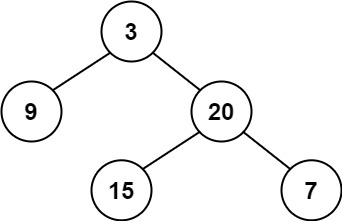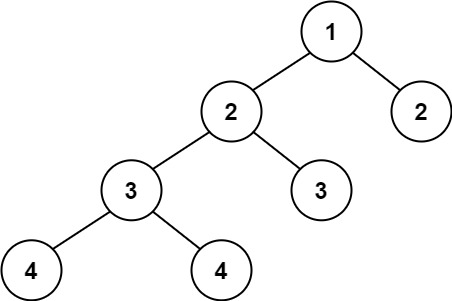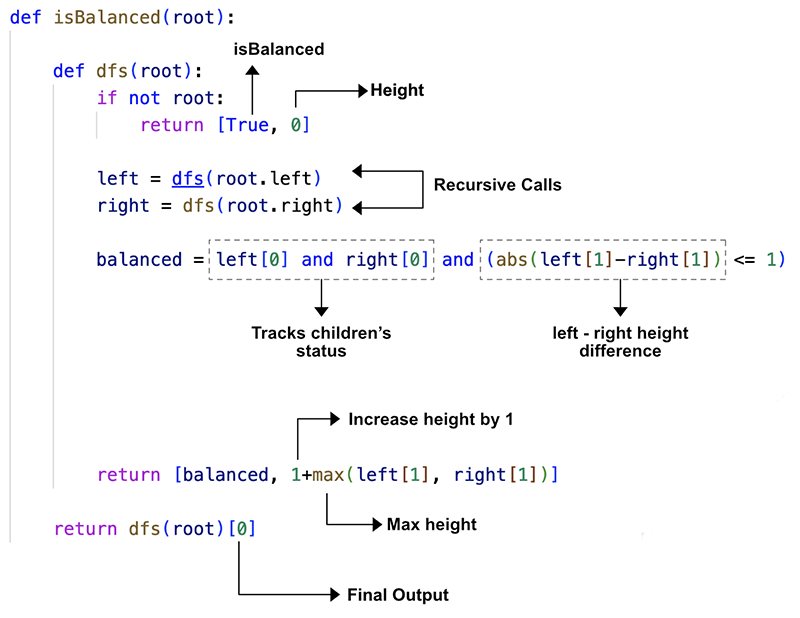Tree - Balanced Binary Tree
All diagrams presented herein are original creations, meticulously designed to enhance comprehension and recall. Crafting these aids required considerable effort, and I kindly request attribution if this content is reused elsewhere.
Difficulty : Easy
Start from leaf - PostOrder dfs()
Problem
Given a binary tree, determine if it is height-balanced.
A height-balanced binary tree is a binary tree in which the depth of the two subtrees of every node never differs by more than one.
Example 1:
1
2
Input: root = [3,9,20,null,null,15,7]
Output: true
Example 2:
1
2
Input: root = [1,2,2,3,3,null,null,4,4]
Output: false
Example 3:
1
2
Input: root = []
Output: true
Solution
We need to use Bottom Up (Post Order) for solving this. Just like any Tree problem we will be using DFS approach here. Lets visualize the approach first.
First step is to define the base condition. We will return if the current node is balanced and whats the current height. The None nodes are always balanced and height of them are always 0. So our base condition always returns [True, 0].
1
2
if not root:
return [True,0]
Since we will be staring from bottom-up we need to get to the base conditio. So lets run dfs() on both the left and right nodes.
1
2
left = dfs(root.left)
right = dfs(root.right)
Next, we need to find out if the current left and right nodes are balanced or not. First check if any of the child node are balanced or not & then compare the height of the current left and right nodes.
1
balaned = left[0] and right[0] and abs(left[1]-right[1]) <=1
Finally, return the array by calculating the max height.
1
return [balaned, 1+max(left[1],right[1])]
Final Code
Here is the full code.
1
2
3
4
5
6
7
8
9
10
11
12
13
14
15
16
17
18
19
20
# class TreeNode:
# def __init__(self, val=0, left=None, right=None):
# self.val = val
# self.left = left
# self.right = right
def isBalanced(root: TreeNode) -> bool:
def dfs(root):
if not root:
return [True, 0]
left = dfs(root.left)
right = dfs(root.right)
balanced = left[0] and right[0] and (abs(left[1]-right[1]) <= 1)
return [balanced, 1+max(left[1], right[1])]
return dfs(root)[0]



